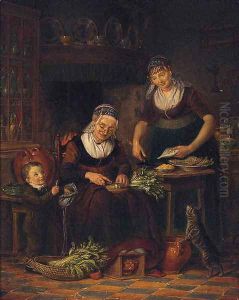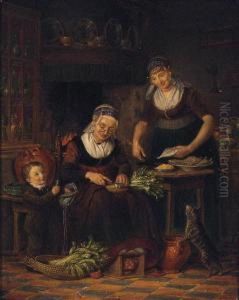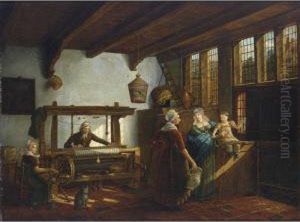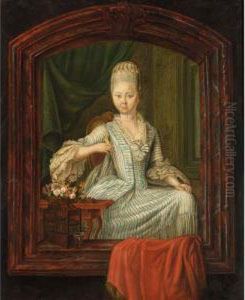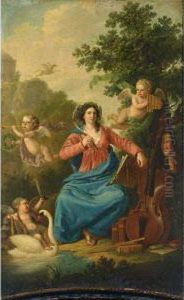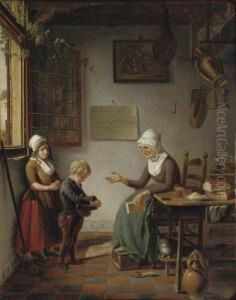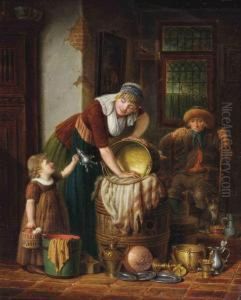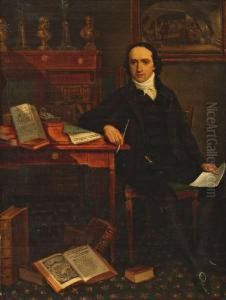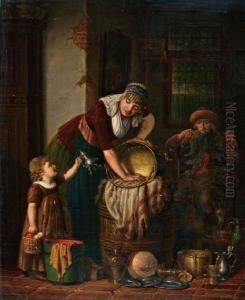Johanus Petrus Van Horstok Paintings
Johan Petrus van Horstok was a Dutch artist born in 1777 in Amsterdam, Netherlands. His early life details are relatively obscure, but it is known that he developed an interest in art at a young age. Van Horstok was active during a period in which Dutch art was in a state of transition, moving away from the grandeur of the Golden Age to a more modest style that reflected the economic and political changes of the time.
Van Horstok's works are characterized by their detailed brushwork and subdued color palette, often reflecting the somber mood of the era. He was primarily a portraitist, capturing the likeness of the Amsterdam bourgeoisie, but he also painted historical and biblical scenes, which were popular among art patrons of the era. His approach to these subjects was typically understated, focusing on the human aspect rather than the grandiose.
Despite his talent, Van Horstok did not achieve widespread fame during his lifetime. His clientele was mainly local, and he didn't have the same level of international exposure as some of his contemporaries. However, he was respected within his community and contributed to the local art scene through his teaching and participation in art societies.
Van Horstok's life was cut short when he died in 1815, at the age of 38. The cause of his death is not widely documented, which is not unusual for artists of his time whose fame came posthumously. After his death, his works were more widely recognized for their contribution to Dutch art, and today he is appreciated for his role in the transition period of Dutch painting. His surviving works can be found in various Dutch museums and are studied for their historical significance and craft. Van Horstok's style is considered an important link between the end of the Dutch Golden Age and the more modern movements that followed.
